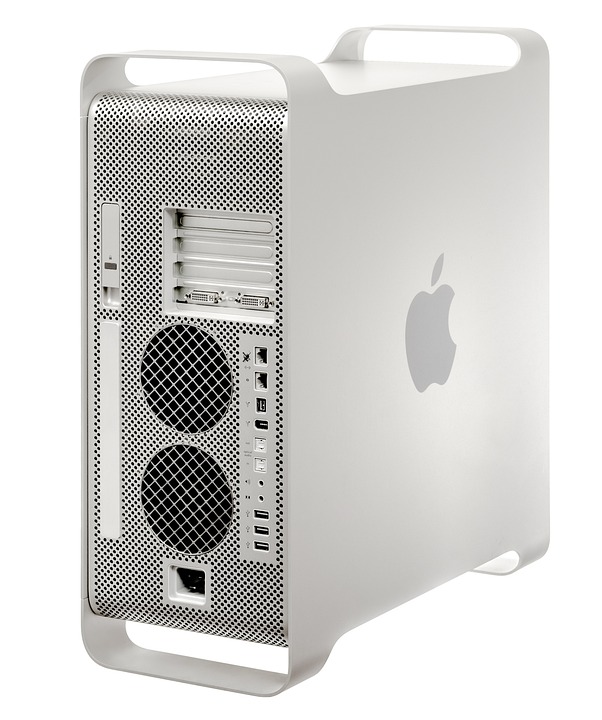The advances in technology will send humans to Mars in the near future. Internet of things, 5G, artificial intelligence, automated driving, and so on and on, probably no one is able to list all the new technologies that are emerging. The complexity of the technological world is wonderful but just as bewildering, and difficult to grasp. Yet, the researchers, engineers, and technicians just need to focus on their own portion of the work. The complex robots are composed of smaller functional units that are manageable by the respective professionals. They are guided by scientific texts and in the minds. Despite the complexity of technologies, they will finally be traced to the simple origin in scientific texts.
Wikipedia defines technology as “Technology is the sum of techniques, skills, methods, and processes used in the production of goods or services or the accomplishment of objectives, such as scientific investigation.” In the bing.com search, technology is defined as “the application of scientific knowledge for practical purposes, especially in industry.” The definitions are broad, seemingly to include all useful ways of humans achieving something. Indeed, technology is itself a broad term with many valid definitions. Both definitions are correct in that they describe facts. But they don’t explain the meaning of the terms such as “techniques”, “application” and “scientific knowledge”, which are vague terms and could involve all the things in the universe.
Since we defined science in terms of texts in the paper “a new definition of science – the textual foundation that represents the real world”, technology should also be defined in terms of texts due to its scientific nature. Science and technology are closely related and inseparable in the modern world.
1. Scientific texts – the core of technology
We consider texts as the core of science, which should also be in the core of technology due to the essentially same nature of science and technology. Now we are not repeating the textual nature of science/technology, interested readers can refer to our article “language – the core of science”.
Science is able to represent everything, including human behavior. Not only natural phenomena are represented and accumulated, so are human activities. The procedures, methods, details of making achievement are recorded in texts, which are then established as representations. With the textual representations, human activities are organized, classified, and building upon existing known technologies.
Characteristics of technology
Usually, technology is viewed from the angle of its effect on the societies, such as its relations with culture, its practical use, its relation with the economy, politics, etc. These are more of its manifests than its essence. They are of non-textual nature or centered on non-texts. Attributing the characteristics of technology to the various aspects of societies not only complicates the issue, leading to endless interactions but also switch people’s intentions away from technology’s true nature.
Facing the complexity, variations of the ubiquitous and ever-changing technologies, we should think deeply into the characteristics common to all technologies, which texts possess. Represented by texts, technology gets its essential features common to all technologies.
Technical documentation
Methods, skills, materials, procedures, principles, and so forth, all need to be documented for understanding, learning, communication, and recording purposes. User manuals, technical specifications are usually the first stuff needed by customers and engineers, either during product shipment or during product development stages. Technical documents even describe a product more accurately than the product’s actual operations. Despite the complex operations, deviation in operating conditions and by different individuals, abundant materials, changing personnel, documents are relatively stable, simple, accurate, reliable, and explanatory.
Again, it should be emphasized that scientific texts take effect in mind. The technical documents should take effect in mind and don’t equate to the technological texts in mind.
2. Differences between science and technology
It is needed to find the differences between science and technology. Although they have the essential cores, their appearances and emphases are different to account for various aspects of the human world.
Science and technology have similar branches and knowledge. The main difference between science and technology is their goal and objective. Science’s purpose is to observe and explain, while technology aims at taking action and making changes. Their direction is opposite to each other. Science is more of observation, while technology emphasizes action. The same texts can be considered as science or technology depending on the objective and usage. For example, the law of motion is itself a science, but it becomes technology when being utilized to make and operate machinery.
Technology is tightly associated with the man-made world. Human activities have changed the world’s appearance and the way people live. These are the direct result of technologies, although it can also say the people applied science to achieve all these. By intuition, science is a deeper and basic level of knowledge, while technology is more associated with direct applications. Science tends to be fundamental while technology tends to be detailed. But texts play an equally central role in their formations.
Nowadays, information spreads instantly; products are transported speedily. People increasingly lived in environments surrounded by machine-manufactured products and constructions. It became easier for people to achieve their goals by employing existing knowledge and tools. On the other hand, many curiosities can be answered by entering questions into search engines, in seconds. It seems everyone possesses enough knowledge. All one needs is to take action. As a result, more people became action-oriented, the term “technology” is becoming more popular than the term “science”.
3. The text-based definition of technology
Regarding the essential nature of and differences between science and technology, now we provide a new definition of technology as:
The scientific texts that guide human activity.
This definition contains two points:
First, technology is scientific texts.
Second, these texts are employed as guidance.
Our definition doesn’t attempt to invalidate current definitions. Instead, we view from a different angle, focusing on a deeper level, situating on the text-centered model of the world.
Usability of technology
Usually, human activities are purpose-oriented. Hence, technology usually has practical applications. But the extent of application varies depending on specific technologies. Also, a technology useful on one occasion or for some people might not be useful on another occasion or for other people. The activities might be beneficial or bad for society.
Possible extension of the definition
Animals and machines might employ technology in the future and probably currently, such as AI. In those cases, scientific texts exert their effect not directly via human activities, but via animals or machines. Their use of technology is imitations of human intelligence, without essential differences. The definition could be expanded to all human and non-human activities that are guided by scientific texts.
Unifying the non-textual technology with textual technology
People might argue illiterate societies and even animals possess some form of technology, although not so advanced as the modern form. Without going into deep confusion with endless, some are ambiguous, examples, we focus on principles. Sequentiality, clarity, and representation of reality are the three defining features of science. Modern, true-sense technology also possesses these features. In essence, the technologies in illiterate societies also came from the sequential minds with scientific properties in primitive form, which manipulate non-texts instead of texts, in a less efficient/effective manner. Scientific texts truly demonstrate those properties, facilitate visual processing, and make progress in the capability of human minds.
4. A text-centered model of science and technology
We can now propose a text-centered model of science and technology that starts from investigative observations, which derive scientific/technological texts, which in turn lead to actions through proper application. That is to say, science and technology are both integrated into the texts. If the purpose is in the non-text to text direction, focusing on deriving theories, these texts are more about science. If the purpose is in the text to non-text direction, focusing on taking action, these texts are more about technology. The actions change the environment, which becomes a new subject of observation, leading to the derivation of new scientific/technological texts. In this way, scientific and technological activities form endless iterations, surrounding texts in the center.
5. Conclusion
By this new definition, the nature of technology is made known. The relation between science and technology is defined and integrated into the texts. The complexity of understanding technology is reduced. A new basis is provided for future discussion of our technological world.
By defining technology in terms of text, the scientific strengths of various writing systems will also determine their technological strengths.





More Stories
Manner Freak? Top rated 4 Manner Applications Trending in 2018
The Point out of VoLTE in India
How To Get Rid Of The Dreaded “Beer Haze”